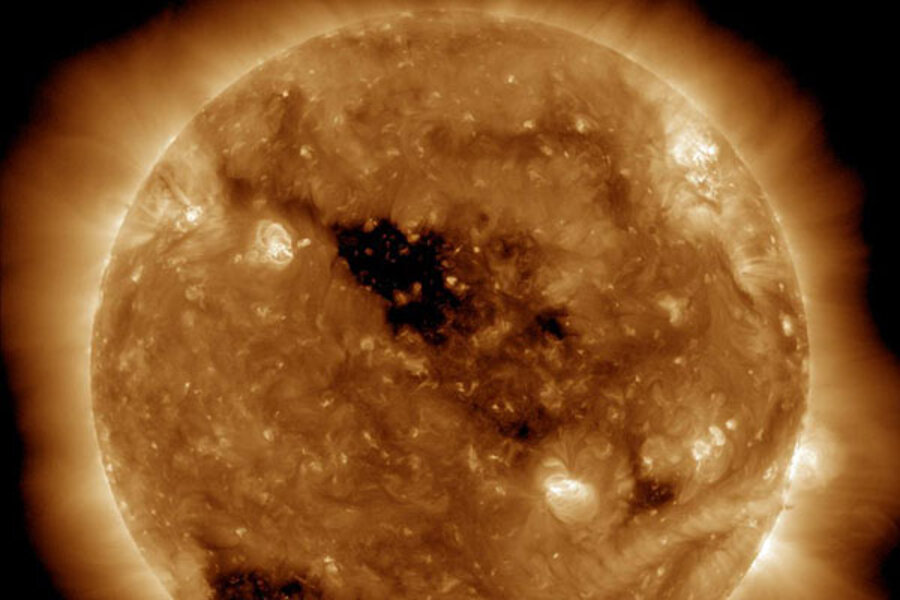These are weak spots in the magnetic field of the sun's corona that allow protons and electrons to leave the star a speeds of around 1.7 million miles an hour. This release is known as fast solar wind, in contrast to the slow solar wind, which constantly streams from the sun at 900,000 miles an hour from along the sun's equatorial regions. During the low point in the 11-year sunspot cycle, these holes usually are found near the sun's poles. But during the peak of the cycle they can crop up almost anywhere on the sun. They tend to appear near the sun's equator as sunspot activities declines during a sunspot cycle. Holes appearing at this location trigger the strongest effects on Earth's space weather. The fast solar wind can trigger mild disruptions in Earth's magnetic field, which can induce relatively small voltage spikes on long-distance power-transmission lines and disrupt radio communications in polar regions. In addition, these fast particles leaking through the coronal hole can brighten up the auroras.

AIA/SDO/NASA/File
This Solar Dynamics Observatory image in extreme ultraviolet light shows a dark coronal hole near the center of the sun's disk.




